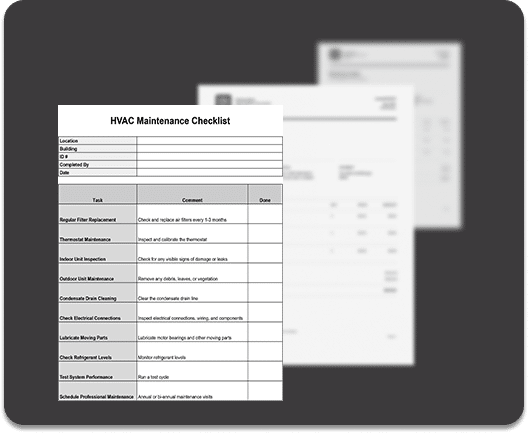If not well planned, companies run the risk of mismanaging a layoff or reduction in force. Here’s how to layoff employees the right way for a smooth transition.
Recent headlines are riddled with layoff announcements. Despite a surplus of job openings, employers across industries are reducing the size of their workforce. Liberty Mutual, Ford, General Motors, Nokia, Amgen, LinkedIn and the Washington Post have all announced layoffs in recent weeks.
This time of year, business leaders are evaluating company performance, planning for next year, and making tough decisions about where to invest and what to adjust for long-term success. Concerns about the economy, changing market conditions, and adoption of technologies like artificial intelligence are all shaping business projections. When companies underperform or significant struggles are anticipated, it’s natural for leaders to consider a layoff or reduction in force (RIF).
Just as we hire employees to shape a future workforce, a RIF will shape your future organization, as well. A smart RIF will not simply downsize your organization; it will right-size and right-shape your workforce for what’s next. Your overarching goal should be to retain the workforce you need to move the company forward – in a way that keeps your employees engaged and proud of where they work. If not well planned, companies run the risk of mismanaging it. Here are five tips on how to layoff employees, or manage a RIF, the right way.
1) Assign Resources to the Effort.
Technically, a layoff is a temporary separation of employment and a reduction in force (RIF) is permanent. Often, a RIF is tied to organizational restructuring, a significant revenue downturn, or lack of sufficient work for employees. However, in recent years, layoffs are often permanent, too, and employers often use the terms interchangeably.
Either way, pulling off a layoff or RIF is a tremendous undertaking. Doing it well takes time and the commitment of a team of professionals. Assemble your RIF team to guide the planning, communications, event, and follow up. You’ll want a mix of executives, HR leaders, and line of business managers to make the hard decisions and execute the plan as clearly and compassionately as possible – for those who leave as well as the individuals who remain. People who stay may need to pick up some slack from those who leave the team.
2) Shore Up Job Descriptions.
You know that keeping job descriptions up to date is essential for recruiting the right employees. For the same reasons, you’ll need updated job descriptions that describe your go-forward jobs in the organization. Make sure you’re documenting the skills you will need after the reorganization, not the skills of those roles or people that you’re attached to. This exercise is prone to the “halo effect,” so be sure to align desired workforce skills and competencies with the organization’s goals to help make the best decisions.
3) Communicate. Communicate. Communicate.
 There are usually signs of potential layoffs long before anything happens. Often, employees will notice changes and cutbacks that may signal an effort to delay or avoid cutting headcount. Before long, rumors are flying. While rumor mills are common, they aren’t helpful for figuring out what’s really happening.
There are usually signs of potential layoffs long before anything happens. Often, employees will notice changes and cutbacks that may signal an effort to delay or avoid cutting headcount. Before long, rumors are flying. While rumor mills are common, they aren’t helpful for figuring out what’s really happening.
Once your leadership team decides to layoff employees, your best bet is to confirm the facts – in writing. It may seem counter-intuitive, but communicating the facts of your RIF – before, during, and after the event – can go a long way in keeping employees more focused and engaged when you need them the most. For those that leave the company, communication can help take the sting out of the process and better arm them for their next steps.
One note of caution. Resist the temptation to “quiet cut” your employees to trim costs without dismissing workers. Some companies hoping to skirt the pain (and legal requirements) of a RIF are eliminating certain jobs and then reassigning those employees into less prestigious, more demanding, and lower-paying roles. The result of such mixed messages is confusion, fear, and anger. If you are eliminating jobs where the employees have skills you want to retain, be clear and fair about what opportunities you can offer. Employees will accept reassignments more readily when they feel that their skills are being valued, and they are able to keep their dignity intact. You’ll be reinforcing a positive, skills-focused culture that will last well beyond any single RIF.
4) Aim to Execute Flawlessly.
Adopt a plan-brief-execute-debrief approach to ensuring that you’re protecting your employees and your organization. From the start, focus the team on making hard decisions with the future of the organization in mind. Likewise, make personnel, process, and communication decisions that comply with federal, state, and industry regulations.
Provide support for those employees transitioning out as well as the team that managed the RIF. Offer support, too, to those remaining employees who will be adjusting to their new work reality.
5) Move Forward. Together.
The RIF is complete once all those who need to leave are gone – after any appeal process that needs to happen – and all those who are staying are in their newly defined roles.
 One company we know laid off two-thirds of their employees in one day. The CEO then assembled the remaining employees saying, “We chose you to work with us. We hope you decide to stay.” That statement reminded each employee that they had their own decision to make about what happened next – an important sentiment following a disruptive event that can leave so many feeling powerless. The CEO then outlined her vision for the company, her hopes for what the team could achieve together, and the importance of each person’s contribution. Starting on day one after the RIF, employees had a shared picture of what could be ahead for the newly configured workforce and organization. With continued communications, 96 percent of the remaining employees chose to stay and were with the company one year later.
One company we know laid off two-thirds of their employees in one day. The CEO then assembled the remaining employees saying, “We chose you to work with us. We hope you decide to stay.” That statement reminded each employee that they had their own decision to make about what happened next – an important sentiment following a disruptive event that can leave so many feeling powerless. The CEO then outlined her vision for the company, her hopes for what the team could achieve together, and the importance of each person’s contribution. Starting on day one after the RIF, employees had a shared picture of what could be ahead for the newly configured workforce and organization. With continued communications, 96 percent of the remaining employees chose to stay and were with the company one year later.
RIFs are the last and least desirable option. They become a reality when the alternative is worse. Handled well, a RIF can ultimately reinforce a positive company culture, foster employee loyalty, and position an organization for future success.
As you’re planning now to position your organization for future success – regardless of whether that planning involves a potential RIF or layoff – our “Talent Management Strategies to Build Your Future Workforce” white paper may be a useful reference. Or contact us to see if Avilar’s WebMentor Skills™ competency management system could support your team.
RELATED RESOURCES
Why Them? How to Make Smart Layoff Decisions
8 Benefits of Shifting to Data-Driven Decisions for Your Workforce
Workplace Allocation Planning: Using Competencies for the Best Results
Five Ways AI Can Help Close the Skills Gap of Your Workforce


















